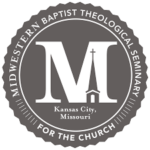Several months ago on “For His Renown,” my friend Jim Hamilton and some others responded here and here to some professing evangelical scholars who are questioning that there was a standardized, official Hebrew Bible (Old Testament) prior to the New Testament period. The comments that followed disclosed that one reason why some doubted that the biblical authors and ancient Jews held a deep canonical consciousness is the evident changes in the Decalogue versions of Exodus 20 and Deuteronomy 5. To them the alterations suggest that Scripture’s development was more fluid than most evangelical doctrines of Scripture want to affirm and that later seers, scribes, and sages felt fully free to alter, adapt, or change previous Scripture to meet their ever-changing contexts.
In light of these statements, I offered the following comments to the discussion (with just minor adjustments). With Dr. Hamilton, I see a deep canonical consciousness in Scripture and believe that, while the manuscript tradition suggests that the ancient Jews clearly allowed non-canonical variations and adaptations, they were also committed to a single, unchanging, authoritative text as Scripture (for more on this, see Peter J. Gentry, “The Text of the Old Testament,” JETS 52.1 [2009]: 19–45).
Versions of the Decalogue in Exodus and Deuteronomy––Different Yet the Same
Clearly Deut 5:6–21 evidences a number of distinctions from the Exodus version of the Decalogue. Most obvious are (1) the change of focus from God’s work in creating the world to his work in creating a people (i.e., the Exodus) as the basis for Sabbath keeping (Deut 5:12–15), (2) the shaping of the final six prohibitions into a single unit by a fronted conjunction (ו “and”) (Deut 5:17–21), and (3) the transformation of the prohibitions against coveting (Deut 5:21a-b) by using two different verbs, by including “field” before the list of household members, and by transposing “house” and “wife,” thus separating the latter from the list and placing the charge against lust (i.e., coveting a neighbor’s wife) on its own line. Nevertheless, Deuteronomy treats its Decalogue as a reiteration of the very “Ten Words” Yahweh spoke out of the midst of the fire at the mountain of God––namely, as an echo of Exod 20:1–17 (cf. Deut 5:4–5, 22 with Deut 4:12–13 and Deut 10:4). After the 40 years in the wilderness (Deut 1:3–4; 4:45–46), Moses updated the wording of the Ten Words, probably for pastoral purposes (see Daniel I. Block, “‘You Shall Not Covet Your Neighbor’s Wife’: A Study in Deuteronomy’s Domestic Ideology,” JETS 53.3 [2010] 449–74). Yet the Pentateuch’s final editor appears to have felt no tensions between the two versions.
Furthermore, unlike the Exodus version, Moses’ wording in Deuteronomy suggests that it is a secondary account that rests on a law that Yahweh previously proclaimed at Sinai. This is most evident in the twice stated subordinate clause “just as Yahweh your God commanded you,” which stands as a plus in Deuteronomy’s Words on the Sabbath and honoring one’s parents (Deut 5:12, 16). As Norbert Lohfink concludes, this formulaic back-reference ensures that “in spite of the changes and additions that have been made [in the deuteronomic version], at bottom nothing is commanded that is not also in the older version” (“The Decalogue in Deuteronomy 5,” in Theology of the Pentateuch, 262, italics added). In light of this fact, it seems to me the Decalogue is being viewed as a canonical document, located in the shrine (Exod 25:16; 40:20; Deut 10:2, 5; 1 Kgs 8:9, 21; 2 Chr 5:10; Heb 9:4)––a document that prophets could apply to fresh situations without variation to its essence.
Potential Pastoral Expansion in Both Versions of the Decalogue
A couple other features that may be relevant to this particular discussion are the use of לאמר “to say” to introduce the Decalogue in both Exodus and Deuteronomy and the shift from 1st to 3rd person in the way Yahweh is addressed (note the switch at the command not to bear Yahweh’s name falsely). Along with seeing the change from first to third person in the Decalogue as a tool for uniting material that is to be read together (see my “Counting the Ten: An Investigation into the Numbering of the Decalogue,” esp. 114–15), I propose the shift could be a formal marker signaling when the leaders of Israel ran to Moses and requested that he serve as mediator of Yahweh’s voice (Exod 20:19, Deut 5:27). While it is clear that Yahweh spoke all Ten Words to the people (Deut 5:22), the leaders engaged Moses immediately after Yahweh began to speak (Deut 5:23; cf. Exod 20:18–19). Furthermore, Deuteronomy 5 introduces the Ten Words with Moses already serving as covenant mediator, and the difficult infinitive construct לאמר at the end of Deut 5:5 may as easily modify Moses’ “declaring” (להגיד) in Deut 5:5 as Yahweh’s “speaking” (Piel דבר) in Deut 5:4. With this, it is at least possible that the record “And [Moses] said to them” (Exod 19:25) that comes just before the Decalogue points to Moses relaying God’s Words to the people (so Hamilton, Exodus, 316).
Significantly, the לאמר “to say” speech frame that introduces the Decalogue in both Exod 20:1 and Deut 5:4–5 by nature marks a non-prototypical speech event, which includes at least one of the following features: summarizes several similar speeches or one long speech, presents the statements of many people as one statement, has one character in the story cite a prior statement by another character in the story, comes through an agent or prop rather than a full character or is from someone who is not actually present and participating in the current conversation, or functions as the official record of the principal points made by speakers and is thus less vivid conversation than it is a documentation of the essential points made by the speakers (C. L. Miller, “Discourse Functions of Quotative Frames in Biblical Hebrew,” in Discourse Analysis of Biblical Literature, 165; idem, The Representation of Speech in Biblical Hebrew Narrative, 425–29; cf. my summary in A Modern Grammar for Biblical Hebrew, 323–27). One would expect לאמר to introduce Deuteronomy’s version of the Decalogue, because Moses the mediator is recalling the Decalogue from an earlier time; however, the use of לאמר in Exodus is less expected and may serve as a signal that even that version of the Decalogue came through the agency of Moses and is a pastoral application of the shortened Decalogue housed in the ark.
Conclusion
Regardless of how we understand the exact nature and relationship of the two Decalogue versions, we cannot view the differences between Exodus 20 and Deuteronomy 5 as adding or taking away (Deut 4:2). Furthermore, with M. G. Kline long ago (see The Structure of Biblical Authority), because the Decalogue was a covenantal document, it was by nature canonical/authoritative, and Moses treats it as such.






